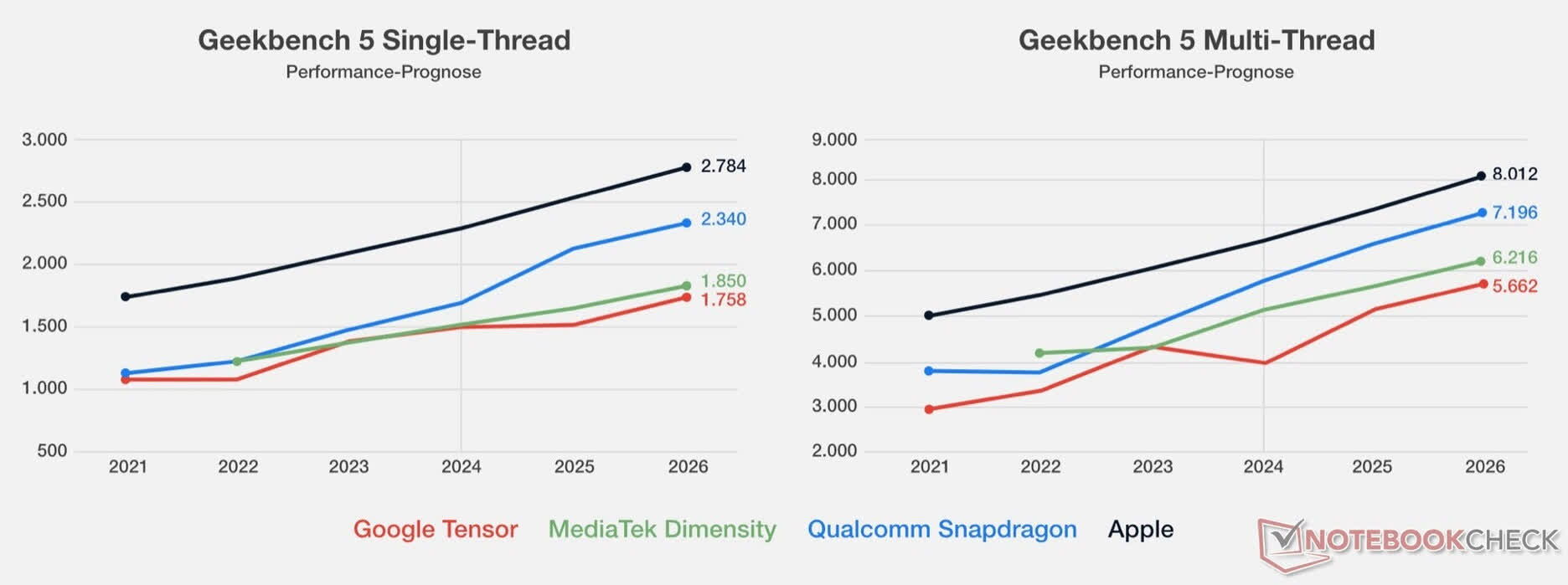The big picture: It appears Google is preparing for its next-generation smartphone processors to once again fall behind the competition, at least in terms of raw performance. An internal leak has revealed the company’s projected benchmarks for the upcoming Tensor G5 and G6 chips, which are expected to power the Pixel 10 and Pixel 11 lineups, respectively.
According to data from a credible source cited by Notebookcheck, Google’s own projections reveal how the Tensor G5 and G6 will measure up against flagship processors from competitors like Qualcomm, MediaTek, and Apple. The publication notes that these forecasts consider anticipated performance improvements from companies such as Qualcomm, which is expected to introduce new Nuvia cores with a substantial boost in capability.
In terms of specifics, the Tensor G5, set to debut in the Pixel 10 series, is projected to deliver around 30 percent better multi-threaded performance compared to the current Tensor G4. This aligns with leaked specifications showing the G5 retaining an X4 prime core like the G4, while increasing the number of performance cores from three to five and upgrading them to the newer Cortex-A725 designs.

Single-thread performance is expected to see only minimal gains, likely due to Google sticking with the Cortex-X4 configuration as the prime core.
The outlook is similar for the Tensor G6, which is set to power the Pixel 11 lineup. According to Notebookcheck, this chip will forego multiple efficiency cores entirely. Instead, it will feature a 1+6+1 core configuration, consisting of one Arm Cortex-X930 prime core, six Cortex-A730 performance cores, and a single Cortex-A520 efficiency core.
Google’s forecast suggests this setup will deliver around a 15 percent improvement in single-thread performance and an 11 percent boost in multi-core output over the G5. However, even with such a unique arrangement, the Tensor G6 is not expected to surpass its competitors in performance.
Naturally, these figures are just projections, so they should be taken with a grain of salt. Yet they align with Google’s track record with Tensor, presenting a somewhat tempered outlook for fans of high performance.
The data also highlights a familiar trend in mobile SoCs, with Apple maintaining its lead, followed by Qualcomm and MediaTek.
On a positive note, the projections do indicate solid performance gains from one generation to the next.

